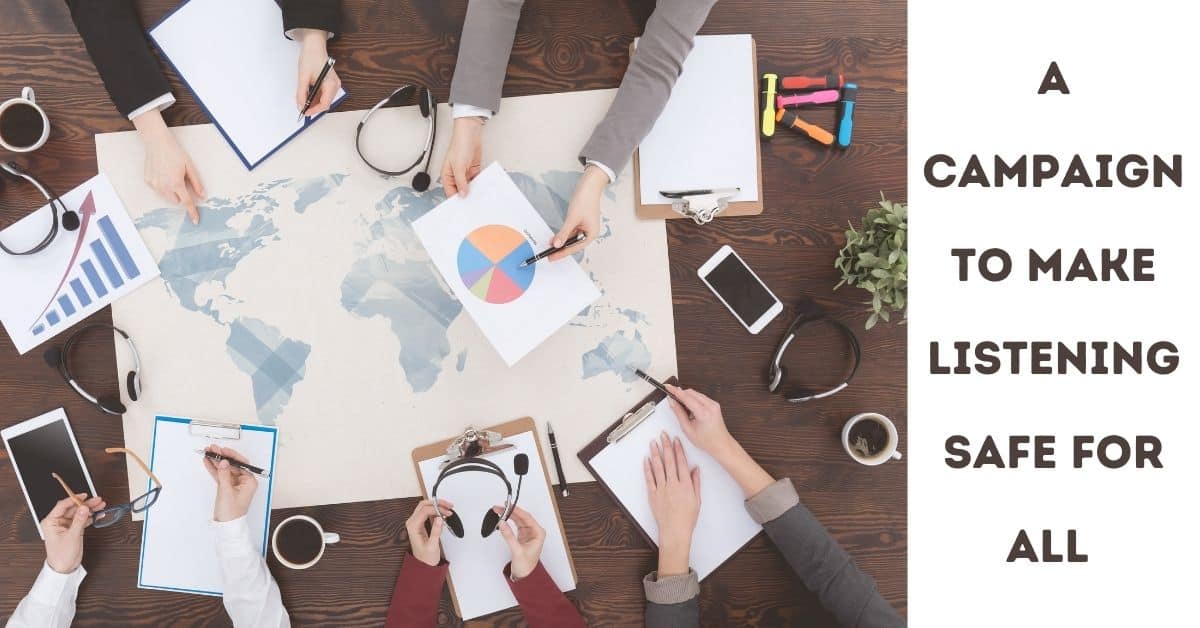
The World Health Organization (WHO) estimates that over 1 billion people globally are at risk of developing hearing loss caused by exposure to loud noise! We live in a more technologically integrated world and use various digital devices daily – smartphone, headphones, Bluetooth speaker etc. Combined with the high levels of sound we may be absorbing at entertainment venues, sporting events, and other social spaces; people today are at higher risk of developing hearing loss. According to WHO, among people between the ages of 12-35:
- 50% listen to unsafe levels of sound through personal audio devices
- 40% are exposed to potentially damaging levels of sound at nightclubs, bars, and sporting events
These significant statistics highlight the alarmingly growing hazard to effective hearing. To bring critical attention to this, WHO launched the Make Listening Safe initiative in 2015. A global campaign, Make Listening Safe aims to raise awareness about this increased risk of hearing impairment and ways to safely listen to audio devices.
Noise Induced Hearing Loss
We are constantly absorbing sound throughout the day – alarm clocks, kitchen appliances, television, traffic, music etc. Typically, these sounds are not particularly harmful to our hearing but can be if they are too loud. Sound is measured in units referred to as decibels (dB) and noise above 85dB is considered potentially dangerous for our hearing health. But how loud is this?
- 0 dB: near total silence
- 30dB: quiet room, whispering
- 50dB: normal conversation
- 60dB: busy street, alarm clock
- 80 dB: city traffic, vacuum cleaner
- 100 dB: hand drill, trains
- 120dB+: concerts
We can regularly absorb sound that is above 85dB by playing music loudly, frequently being in loud venues, and working in noisy environments. Consistent or one-time exposure to loud sound can cause noise induced hearing loss by damaging the inner ear. The inner ear consists of hair cells which help translate soundwaves into electrical signals that are then sent to the brain to be processed; allowing us to understand and make meaning of what we hear. There are thousands of hair cells in each ear and unlike other types of cells, they do not regenerate. This means that any damage is permanent, resulting in hearing loss.
Impact
Noise induced hearing loss reduces one’s ability to hear and process sound which has multifaceted effects that impacts daily life. This includes:
- Strained Communication: people with hearing loss can experience a range of symptoms that make communication difficult including – tinnitus (a buzzing or ringing noise in the ears), sounds are muffled and unclear, needing others to repeat themselves etc.
- Social Withdrawal: these symptoms can make engaging with others a draining experience and cause people to avoid social settings. This results in spending less time with friends and family which can take a toll on emotional and mental health.
- Overall Health: in addition to mental health being impacted, untreated hearing loss can contribute to increased accidental injuries and the development of other medical conditions including dementia.
It is critical, especially as we are exposed to more and more loud noise, to be proactive about your hearing health and practice ways you can reduce your risk of hearing loss.
Protecting Hearing Health
There are numerous ways to make listening safe including the following:
- Low Volume: it is important to be aware of and maintain a lower volume on your personal devices. Again, audio played at and above 85dB is too loud so if you are ever unsure, you can actually measure sound by using an app!
- Noise Cancelling Headphones: noise cancelling technology effectively reduces background noise. This prevents you from having to increase the volume in louder environments to better hear the audio. Investing in noise cancelling headphones is especially helpful if you use your headphones daily.
- Protective Gear: such as headphones, earbuds, earmuffs, and ear plugs provide a protective barrier that reduces the amount of sound you absorb from the environment you are in. Protective wear is particularly important when you are in loud venues such as stadiums or concerts.
- Listening Breaks: your ears need time to rest and recover from constantly absorbing sound. So be sure to implement listening breaks where sound is minimized as much as possible.
By practicing safety measures, you can reduce your risk of noise induced hearing loss and protect your hearing health!
If you have noticed changes in your hearing, contact us today. We provide comprehensive hearing health services, including hearing tests, and we’re here to help!
